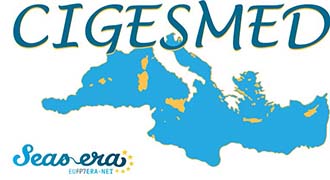Two working groups are dedicated to:![]() 1/ assess the situation for the 12 proposed articles – WG1
1/ assess the situation for the 12 proposed articles – WG1![]() 2/ think tank for the ways for a more integrative and competitive development (*) of CIGESMED, possible gains from economic, social ans legal sciences – WG2
2/ think tank for the ways for a more integrative and competitive development (*) of CIGESMED, possible gains from economic, social ans legal sciences – WG2
Organizing Committee (Dominique Ami, Romain David, Jean-Pierre Féral, Giulia Gatti, Sandrine Serre, Laure Thierry de Ville d’Avray, Leita Tschanz, Pauline Vouriot)
Registration is compulsory.
![]() WG1 Scientific articles to be published (14-16/12/2015) will take place at the Station Marine d’Endoume, Chemin de la Batterie des LIons, 13007 Marseille.
WG1 Scientific articles to be published (14-16/12/2015) will take place at the Station Marine d’Endoume, Chemin de la Batterie des LIons, 13007 Marseille.![]() WG2 Expansion of the range of topics (17-18/12/2015) will be organized at the Villa Valmer, Center for Mediterranean Integration (CMI), 271 Corniche Kennedy, 13007 Marseille
WG2 Expansion of the range of topics (17-18/12/2015) will be organized at the Villa Valmer, Center for Mediterranean Integration (CMI), 271 Corniche Kennedy, 13007 Marseille
(*) To think tank for the ways for a more integrative and competitive development of CIGESMED, possible gains from economic, social and legal sciences
CIGESMED highlighted the need for an integrative approach that would address both environmental and socio-economic issues. That is why CIGESMED organizes these two days of reflection (17-18 December), inviting researchers from social sciences and humanities to join them to mount the foundations for a new interdisciplinary program objectives. In order to set goals that meet their needs, environmental managers and representatives of local authorities are also invited to join the discussion. The products of these days will be modules (future work packages) including objectives, leaders and potential partners.
WG2 time shedule
Why take the coralligenous as a basis for study?![]() The coralligenous is currently a research topic increasingly important in Mediterranean marine ecology. It offers the particular feature of being a coastal marine ecosystem directly impacted by demographics and coastal activities, and to underpin the supply of ecosystem services: food resources (small scale fisheries), red coral for jewelery, aesthetic landscape, recreation (diving, fishing), important biodiversity (over 1600 species), and potentially other services (production of molecules for therapeutic or industrial purposes isolated from these many species) that could be highlighted.
The coralligenous is currently a research topic increasingly important in Mediterranean marine ecology. It offers the particular feature of being a coastal marine ecosystem directly impacted by demographics and coastal activities, and to underpin the supply of ecosystem services: food resources (small scale fisheries), red coral for jewelery, aesthetic landscape, recreation (diving, fishing), important biodiversity (over 1600 species), and potentially other services (production of molecules for therapeutic or industrial purposes isolated from these many species) that could be highlighted.![]() This ecosystem is still relatively unknown, as deep-seated (between 20 and 120 m depth approximately) and often with facies unsuitable to exploration from surface vessels. Effective protection requires an understanding of its necessarily complex functioning .The development of good practices requires the concomitant action of economists, sociologists, lawyers, together with ecologists. To be effective, the recommendations and rulings should be approved by practitioners that are managers, authorities, at every level of responsibility (municipalities, urban communities, regions, state).
This ecosystem is still relatively unknown, as deep-seated (between 20 and 120 m depth approximately) and often with facies unsuitable to exploration from surface vessels. Effective protection requires an understanding of its necessarily complex functioning .The development of good practices requires the concomitant action of economists, sociologists, lawyers, together with ecologists. To be effective, the recommendations and rulings should be approved by practitioners that are managers, authorities, at every level of responsibility (municipalities, urban communities, regions, state).
Objectives :
The purpose of the WG2 is to bring together researchers (in ecology, economics, sociology, law, ..) and managers in order to (i) identify the needs to better address them, (ii) to determine interdisciplinary areas of research concerning the development and management of the coralligenous that could be the subject of a new [multidisciplinary/European/Mediterranean] research project

Leave a Reply